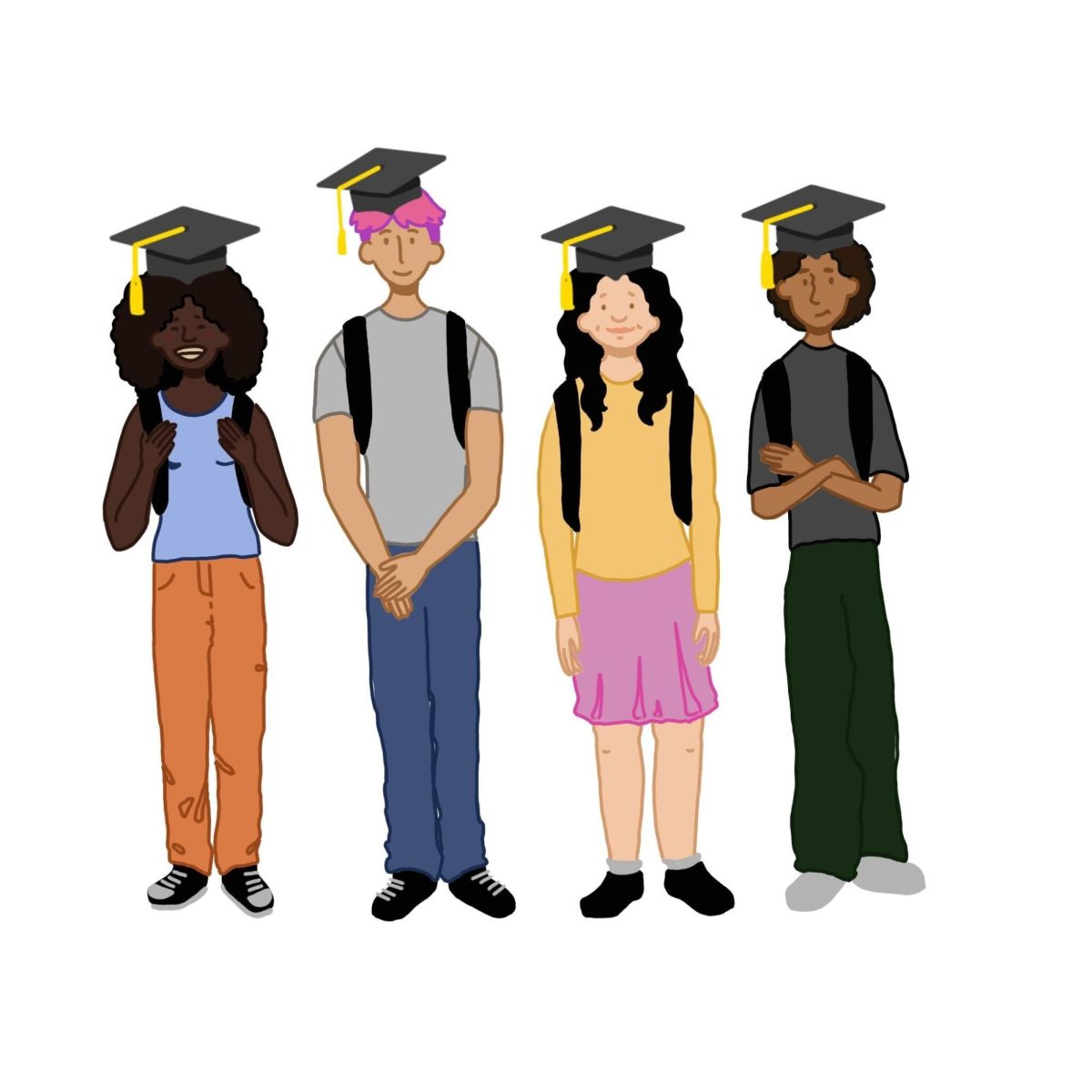For more than half a century, affirmative action spurred intense debate over whether it unfairly benefitted minority students or was a crucial check against structural inequities. On June 29, the Supreme Court overturned the ability for colleges to consider candidates’ race as a decisive factor in their admissions. However, colleges must still bolster diversity by considering another factor: socioeconomic status.
Socioeconomic status has vast impacts on one’s educational experience: it can permit greater opportunities through access to private schools, tutoring and college counselors. According to Brookings, 89% of students from high-income families attend college, while only 51% of students from low-income families do. With education becoming increasingly important for skilled jobs, not having access to college may affect socioeconomic status later down the line. Researchers at Pew have found that college graduates are more likely to wind up in higher economic quintiles.
This new metric could also track many of the original benefits of race-based admissions. Socioeconomic status is historically influenced by racial barriers. In fact, according to the American Psychological Association, poverty rates experienced by African-American and Latino adolescents are more than double that of their White, Asian and non-Latino counterparts.
Socioeconomic admissions is not an unprecedented idea. California banned affirmative action back in 1996, yet many say schools in the University of California (UC) system have implemented measures to achieve greater equity. According to CBS News, admission officers at UC Davis take into consideration whether students are attending an under-resourced school, are living in a medically underserved area or are an English Second Language (ESL) applicant. In fact, 46% of students in the upcoming class are first-generation students.
Although still in need of improvement, this system allows high-achieving, underprivileged students to access higher education despite obstacles that they’ve faced throughout their respective educational journeys. Colleges and universities need to follow in the footsteps of the UC system by conducting direct outreach and recruitment efforts toward schools and school districts that serve students of color and lower-income students.
The current application process, however, still permits consideration of legacies as a factor in admission, which are influenced by historical racial discrimination. Legacy students tend to have high-achieving parents with more background in education, making it significantly easier to get into elite schools. Children of college faculty also receive this privilege. According to the Jul. 13 complaint filed to the Supreme Court opposing legacy admissions at Harvard, legacy applicants, nearly 70% white, were around six times more likely to be admitted than non-legacy applicants. Public universities, such as those in the UC system, are required to admit a certain number of applicants from their state, whereas private universities may rely more on legacy as a decisive factor in admission.
Socioeconomic admissions, by providing opportunities for low-income minorities, can offset the impact of legacy admissions as affirmative action once did. Without consideration of either socioeconomic status or affirmative action, the pathway to higher education would be extremely unfair — easier for upper-class white students and harder for disadvantaged minorities.
As much as they are similar, socioeconomic admissions may even have certain advantages over race-based criteria. Traditional affirmative action hinges on the general idea that specific minority groups are historically disadvantaged in accessing higher education. This assumption doesn’t always apply, however — not all minorities are economically disadvantaged, and not all white and Asian students have access to a multitude of educational opportunities. Generalizing entire racial groups meant that selective colleges still drew from privileged economic backgrounds, even if the student bodies were still not diverse. According to the U.S. News and World Report, the achievement gap between lower and higher income students is twice that of white and Black students.
Nevertheless, this solution is still far from perfect. An article in the Atlantic highlighted that a socioeconomic lens would overlook Black or Latino families that are considered middle or upper class but have still been impacted by generations of racism and inequality. In other words, although on paper socioeconomic status would help to determine those who have systematically been pushed down in the world of education, it would still brush over middle or upper class individuals who have also faced many obstacles based solely on their race. These students would have the assumption placed on them that they have ‘enough privilege’ to have avoided the negative impacts of discrimination, which may be incorrect. Despite flaws of socioeconomic admissions, providing some aid is inarguably better than providing none at all.
In the meantime, colleges and universities can and should still aim to evaluate the impact of race on an applicant’s life, even if indirectly. According to the New York Times, more than two dozen highly selective colleges are using phrases like “identity” and “life experience” in application questions to help students of diverse backgrounds describe who they are. Such essays allow students to address the important influences of race and allow colleges to see how their individual experiences can contribute to the student body. According to the Berkeleyside, some classes in the UC system have also have provided diverse clubs for minority students and have grown outreach efforts targeted toward lower-income students.
Although considering socioeconomic status in admissions isn’t a perfect and final solution, it’s one step towards a more inclusive educational world, and one that colleges and universities must take to facilitate a truly diverse student body.































